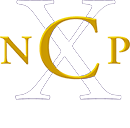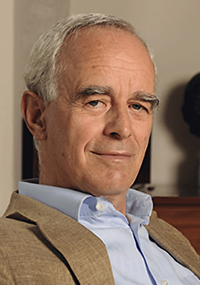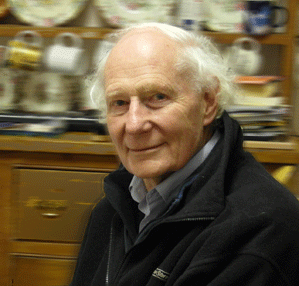Consciousness and Near-Death Research
Pim van Lommel and Peter & Elizabeth Fenwick
– On Death, Near Death and End-of-Life Experiences … (NDE, ELE etc.)
Therner & Loeth
Brief Introduction to the article below written by renowned cardiologist and near-death researcher Pim van Lommel. The following article is actually the preface to Peter and Elizabeth Fenwick’s prominent book ‘The Art of Dying – A Journey to Elsewhere’, translated into Swedish and published 2013 by NCP X-AIONS: ‘Att Möta Döden med Tillit och Hopp – Forskning i Medvetandets Gränsland’.
In our view Pim van Lommel’s text (preface) is highly informative and of considerable public interest, and it is a great pleasure for us to be able to publish it here. Peter Fenwick (Neuropsychiatrist, Neuroscience research, Near-Death/NDE research) and Pim van Lommel (Cardiology and Research on Mind-Brain Relationship, Near-Death/NDE research) internationally famous authorities on near-death research. Their longstanding and extensive clinical studies and experiences provide us with a great deal of valuable information about so-called near-death experiences (NDEs), deathbed experiences/visions, end-of-life experiences (ELEs) and similar, which unequivocally indicates that consciousness and life do not end when we die.
It is very interesting to connect the specified area of research to the Cosmic World Picture which, via Martinus Cosmology and Per Bruus-Jensen’s work presents, inter alia, an explanatory model of our eternal nature and describes how we actually survive ‘death’. Very briefly, this is made possible by our paraphysical organism /body. According to Martinus Cosmology all living beings have, in addition to the temporary physical body, an immortal paraphysical body/structure. We are given an account of how this paraphysical body is constructed and how it operates, e.g., how the so-called ‘ability-nucs’/talent cores, among other things, make it possible for us to take qualities, abilities and skills (which are a pre-requisite for our development) with us from life to life. It should be pointed out that the ability-nucs are highly relevant in the field of epigenetics as they directly exert an influence on the genes of the DNA-spiral. Also explained is how life continues in a paraphysical sphere of existence after physical death and the course of events which leads to a new incarnation. In addition we are given a profound description of what consciousness actually is and of the paraphysical structures and their processes which, side by side with the activities of the physical brain, constitute the foundation of our ability to experience, to remember, think, feel, etc. – in fact, of all activity in our consciousness. Viewed as organicfactors, these paraphysical structures precede the physical body and can accordingly operate independently of it. As such, they contribute to ensuring the process of reincarnation or body-replacement, and thereby the individual’s ongoing course of personal evolution.
Read more overview: The X-Structure: The Solution to The Hard Problem of Consciousness and Reality Abstract — Images & Text (NCP X-AIONS, No 1 – THE SCIENCE OF CONSCIOUSNESS TSC 2016, UNIVERSITY OF ARIZONA)
More about Pim van Lommel and Peter Fenwick on these NCP X-AIONS pages:
The Science of Consciousness TSC 2012 and After Death Communication ADC 2012
The Science of Consciousness TSC 2011
In this context we also refer to the following:
Fenwick, Peter – Lecture at the International Consciousness Conference TSC, University of Stockholm 2011: Toward a science for death related phenomenon and consciousness
Fenwick, Peter & Elizabeth, The Art of Dying – Continuum (2008), Past Lives: An Investigation into Reincarnation Memories – Berkly (2001) og The Truth in the Light: An Investigation of over 300 Near-death Experiences – Berkly Trade (1997).
Peter Fenwick and Sue Brayne, Nearing the End of Life – A Guide for Relatives and Friends of the Dying and End-of-Life Experiences – A Guide for Carers of the Dying.
Pim van Lommel, Consciousness Beyond Life – The Science of Near-Death Experience
IANDS International Association for Near-Death Studies
Martinus Articles; Through the Gates of Death – Sleep and Death — and — The Principle of Reincarnation
Carol Bowman, Past Life Regression Therapy, Reincarnation Research, Children’s Past Life Memories
Jim B. Tucker, Reincarnation and Past Life Research
Litterature by Per Bruus-Jensen:
“X-værket”; X – en komplet indføring i Martinus Kosmologi Band 1 og Band 2 (‘X’ – A Complete Introduction to Martinus Cosmology, ‘the X-work’ 1-2)
Eksistens og Udødelighed Band 1 (Existence and Immortality 1)
I Begyndelsen var Tomheden (In the Beginning there was the Emptiness)
Kosmisk Kemi (Cosmic Chemistry)
Pim Van Lommel:
Foreword to the Swedish edition of
‘The Art of Dying – A Journey to Elsewhere’
by Peter and Elizabeth Fenwick
Terminal patients quite often will ask questions about their upcoming death. Mostly they will be frightened about what is going to happen to them. They will ask themselves: What is death, what is life, and what happens when I am dead? When and how will my life end? Will my ‘life’ go on after death? Now inevitably the question arises: why are most people so afraid of death? Why is our first impulse to prolong life and delay death at all costs? Is fear of death the reason why? And does this fear stem from ignorance of what death might be? Are our ideas about death accurate at all? Is death really the end of everything we are? Even medical training pays scant attention to what death might be. By the time they graduate, most doctors have not given death much thought. Just over 50 per cent of the population of the Netherlands is relatively confident that death is the end of everything. These people believe that the death of our body marks the end of our identity, our thoughts, and our memories, and that death is the end of our consciousness. In contrast, approximately 40 to 50 per cent of Dutch people believe in some form of afterlife. In the United States about 73 per cent of people (male 67 per cent and female 76 per cent) believe in life after death, and in the United Kingdom about 58 per cent believe in some form of an afterlife. Yet few people ever ask themselves whether their ideas about death are actually correct.
This important book by Peter and Elizabeth Fenwick is about the process of dying, about our ideas about death, and especially about the special and quite common end-of-life-experiences (ELE’s) like deathbed visions and coincidences around the period of dying and after death. These experiences have been largely ignored by the medical profession, though they are well known and often reported to nurses and relatives who care for the dying. In our western world death is still a huge taboo, and this book, based on about 1000 new cases, could be of great help to break this taboo by describing the different kind of experiences and its implications for dying patients and their family, and for nursing staff and physicians in hospices and in hospital wards where patients receive terminal and palliative care. In preparation for this book members of palliative care teams in hospitals and hospices were interviewed about ELE’s, and many impressive examples of these interviews are described into detail. Based on these interviews the Fenwick’s conclude that many ELE’s may still go unreported, and they suggest many possible reasons for this: embarrassment, the fear of distressing relatives or appearing insane, or lack of public awareness of ELE’s. Moreover, some patients may simply not want to talk about their experiences.
End-of-life experiences have profound meaning and personal significance to the dying patient, but also for their family and caregivers. During the end of life people sometimes report encounters with deceased loved ones (usually a partner or parent), the sight of a beautiful, unearthly environment and a bright light, or a sense of unconditional love. Nurses, doctors, and families of terminal patients ought to be open to deathbed visions, nearing death awareness or ‘end-of-life experiences’ (ELE’s), that are sometimes only comprised of vague, intuitive images and an inner sense that the moment of transition is near. This is true for adults as well as children. Shortly before the moment of death, a look of intense peace and calm may suddenly appear on the dying person’s face, sometimes coupled with a far-off gaze, a blissful smile, or words such as ‘the light’. Only in those cases where dying people are able or willing to talk about these experiences it becomes clear how important, impressing and even life changing these ELE’s are. Terminal patients can tell us that deceased relatives appear to them to take them along, or to help them to let go their life and leave their sick body. In most cases these ELE’s are considered to be spiritual experiences that reduce the physical suffering and ease the transition. The possibility to communicate with the consciousness of deceased relatives causes a new idea about what death could be: a continuity of consciousness after physical death. Because these experiences of dying people promise the possibility that life continues after death of the body, ELE’s give comfort and hope, and, as long as these experiences are accepted and well understood, take away the fear of death of both the patient as well as his family. Unfortunately, many accounts of deathbed visions and coincidences are either not recognized as such or are interpreted as hallucinations, terminal organic confusion, beliefs, expectations or as the side effects of medication. However, these experiences are totally different from hallucinations that are a result of medication or as a result of dementia, and that always cause fear, confusion and unrest. ELE’s usually occur during clear consciousness, and happen to be powerful and meaningful experiences with a great impact for those who report them. In their research on ELE also other explanations like the use of drugs, belief and expectations could be excluded by the Fenwick’s. According our current western science it is difficult to find any specific brain mechanism that would underpin and explain these wonderful spiritual experiences. And since nurses and volunteers, especially in hospices and other palliative care institutions, have become more open to this kind of experience, ELE’s are now acknowledged more frequently. Because most people die shortly after or even during their deathbed vision, most of the reports of ELE’s are from nurses, doctors, and family and not from patients themselves.
In many interviews not only ELE’s but also deathbed coincidences were mentioned. Sometimes a vision of the dying person (a close or beloved relative) is seen, mostly during sleep in a ‘dream’ or on a sudden awakening from sleep. But also a strong sense of the person can be felt, accompanied by overwhelming and sudden realization that someone they love is severely ill or dying, and with strong feelings of grief or unease. Sometimes these experiences take the form of a visit by the dying person, with ‘seeing’ them, and sometimes even some kind of communication. Also inexplicable and very distressing symptoms may be mentioned, which later seem to mirror the feelings and distress of the dying relative, despite the fact that the content and details of this information at the very moment they occurred not could have been known. Coincidence is perhaps not an adequate term, because these experiences are presumably based on a interconnectedness with the dying person on a distance, and they have a great impact for the people who experience such a coincidence. These ‘coincidences’ occur usually between people with a strong emotional bond, they are mostly a lasting source of comfort for the recipient, and these experiences have the power to alter the own perception of what death means. The fact that sometimes veridical information is received that was not possible to know at that very moment supports the idea that consciousness is not limited to time and space (non-locality), and that people are always interconnected. To understand these experiences we have to step outside the current materialist scientific framework. And even sometimes odd events at the moment of death are reported, like unexplained knocks or rappings, doors banging, telephones ringing, clocks stopping at the exact time of death, or pictures dropping off the wall. These inexplicable incidents are not only mentioned by close family members of the deceased, but also reported by healthcare workers in nursing homes and hospices. And also odd animal behaviour is sometimes mentioned around the moment of death.
Also shared death experiences, or empathetic NDE, may be reported by family members of the dying person. These experiences are reported by healthy people who are present at the bedside of a dying relative, and who share the death experience of this close relative at the moment of their death. They occasionally see a very special light in the room or around the bed of the dying person, with primary qualities of bliss, compassion and unconditional love. But also sometimes the consciousness of the person who is in attendance of the moment of death is suddenly out of his own body and joining the consciousness of the person who just died. They may experience a tunnel, the Light, the feeling of love, and even sometimes meet deceased relatives or the life review of the person who just died. But suddenly they are back in their body again, at the bedside of the person who died just some minutes before.
Very interesting is also the terminal lucidity, which is the unexpected return of mental clarity and memory shortly before death in patients suffering from severe psychiatric and neurologic disorders. Terminal lucidity has been reported in the medical literature over the past 250 years, but has received little attention. These published examples include case reports of patients suffering from brain abscesses, tumours, strokes, meningitis, or dementia. Several of these accounts and reports surprisingly suggest that during terminal lucidity memory and cognitive abilities function normally again for a very short period of time. Terminal lucidity cannot be easily explained by normal neurologic processes, because it has been reported by patients who have severe Alzheimer disease for many years, or are in coma for days, and in these patients brain function must be severely impaired. These patients suddenly become lucid again, recognise family members and children again, call them by name, thank them, and die. Many healthcare workers who are active in terminal care and hospices have been confronted with patients with terminal lucidity.
Also after-death communication, or contact with the consciousness of deceased relatives in the first days, weeks and months after their death is mentioned in this book, and they are mentioned here as ‘hallucinations’, which is by definition a subjective experience that is not shared, although these experiences can sometimes consist of some objective information that could not have been known. These communication is experienced as the sense of a presence, ‘seeing’ or ‘hearing’ the deceased, or even touched by the deceased. These experiences are quite common in bereaved people, and seem to happen between 20 – 50 per cent of the population in the Western world who lost a close relative, mostly a dead spouse, and in case of the death of a child it may occur in about 75 per cent. These ‘communications’ mostly occur during sleep, and are often called a ‘no ordinary dream’ that was far more clear than normal. These so-called hallucinations often lasted for many years, and they have a great impact in the idea that death is not the end of the essence of who we are: our consciousness. There is no scientific explanation for these after-death ‘hallucinations’ as long as we believe that consciousness is only a side effect of a functioning brain, and that logically with death our consciousness should have vanished too.
The content and aftereffects of many end-of-life experiences can be identical to near-death experiences (NDE). These NDE’s are being explained by the idea that a clear and enhanced consciousness can be experienced independently of the body and brain. Several chapters in this book are devoted to discussing explanations of these deathbed visions and coincidences. The standard materialistic view that all conscious experiences are produced by the brain cannot even begin to engage let alone explain these cases. They violate in a coherent fashion the very basis of materialism. However, most of the people who carry out research into consciousness, such as neuroscientists, psychologists, psychiatrists and philosophers, are still of the opinion that there is a materialist and reductionist explanation for consciousness. They still ‘believe’ that consciousness is nothing other than matter, and that our subjective experience that our consciousness is something purely personal and differs from someone else’s consciousness is merely an illusion. According to these scientists, consciousness originates entirely from the matter that constitutes our brain. For decades extensive research has been done to localize consciousness and memories inside the brain, but so far without success. Although providing evidence for the role of neuronal networks as an intermediary for the manifestation of thoughts (neural correlates), neuroimaging studies do not necessary imply that those cells also produce the thoughts. And how should “unconscious” matter like our brain “produce” consciousness, while the brain only is composed of atoms and molecules in cells with a lot of chemical and electrical processes? These aforementioned experiences where the consciousness of deceased relatives can be encountered refer to the possibility that consciousness is not limited to our brain. The intriguing research by the Fenwick’s on ELE in dying patients seem to be a source of new insights into the possibility of a continuity of our consciousness after physical death. Such understanding also fundamentally changes one’s opinion about death because of the almost unavoidable conclusion that at the time of physical death consciousness will continue to be experienced in another dimension, in which all past, present and future is enclosed. Based in research on NDE and ELE the Fenwick’s believe now that death, like birth, may be a mere passing from one state of consciousness into another, and that death is only the end of our physical aspects.
In the past, and in many cultures and religions, a lot has been written about death. Most of us have never heard or read about this old wisdom, and many of us surprisingly have never heard about NDE’s or ELE’s before, and this is why many people still ‘believe’ that death is the end of our existence. People are afraid that with death everything comes to an end. Research on NDE and ELE may be of great help to change our ideas about death: it is highly probable that there is a continuity of consciousness after the death of our body. And this new insight will change the way we treat terminal and dying patients in the end-stage of their disease, and hopefully it will make it possible to listen with our heart, and to accept subjective experiences that cannot be explained by our traditional scientific framework. We need an open mind to read this important book, and to accept the consequences of these subjective experiences that may occur around the moment of death and dying. These experiences have the impact to change our current healthcare into a more compassionate and empathetic care for terminal ill patients.
It is very important to be open to individual needs and wishes of dying patients, and to listen to and accept their end-of-life experiences without any comment or prejudice. It is an essential component of good spiritual care to acknowledge experiences and sensations of terminal people in the transition area towards death, as the reported ELE’s that are extensively described in this book. In the definition of palliative care is not only physical care mentioned, but also psychological, social and spiritual care is an important aspect. We should always try to prevent to start from our own convictions and assumptions about death and dying. I am convinced that this book will greatly contribute to the recognition of end-of-life experiences, that occur far more frequent than recently was known, and that as a result of these experiences in the terminal phase of life the fear of death can diminish or even disappear.
Pim van Lommel, cardiologist, NDE-researcher, author of ‘Consciousness beyond Life’



